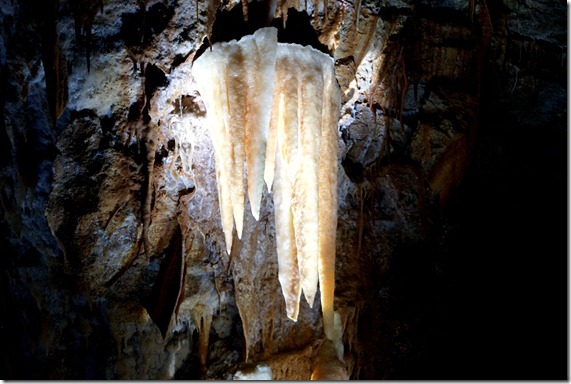
These are some of the spectacular speleothems found inside the Oriental cave at Jenolan. speleothems are otherworldly formations that seemingly grow inside cavernous spaces deep underground. They are created by a suspension of water and dissolved minerals from the limestone outer walls. As the water seeps through flaws in the limestone shell it dissolves the minerals in the rock and carries them with it depositing the minerals with each drip. 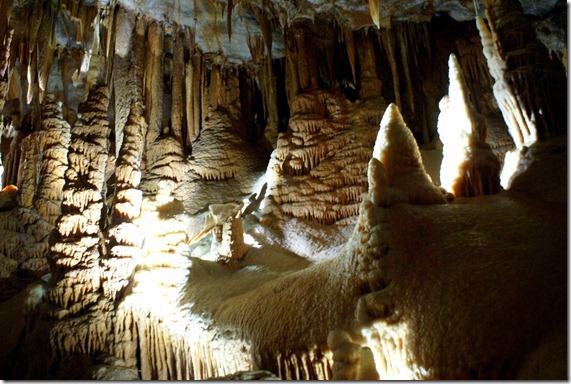
The Oriental cave has some of the most spectacular and richly coloured examples of rock formations in the world. Glenn and I missed seeing this one when we were here 10 years ago for our honeymoon and we are so glad we chose it this time, it is just such a pretty cave.
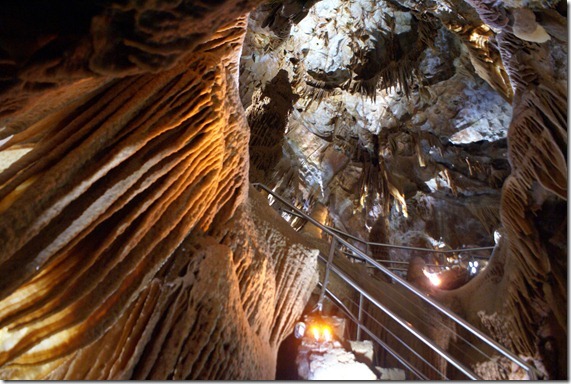
This photo shows the walk up to one of the domes where trapped water long ago carved a circular ceiling reminiscent of the ornate basilicas of Rome. The centre of the dome is hung with a chandelier of stalactites and framed with an ascending spiral of gothic flow stone. Walking deep inside these caves is so unlike an experience found on top of the crust of the earth, it seamed so fantastical I was half expecting Batman to slide into view along the top railing belting out "the Music of the Night"
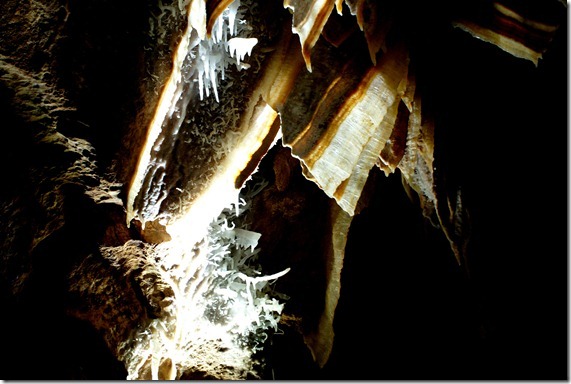
This small alcove off the larger cave system is affectionately known as the bacon shop. If you look at the above photo you can see an example of a Banded Shawl that does smell deliciously baconey if you stare at it for long enough.
The thin stunning white speleothems are called straws and are formed when the water droplet evaporates slowly leaving the deposited minerals in a perfect circle the diameter of the droplet. Straws are hollow and water travels down the centre of them leaving behind more minerals and each droplet hovers on the end on the straw. Mostly they grow straight down as common sense and gravity would dictate but in this cave most of them are cheeky little freaks of nature and choose to grow sideways. This means they get a new name – helictites and even the scientists haven’t quite got their heads around why they act the way they do. The most likely theory is capillary forces, which to me just sounds like Colonel Jack O’Neal’s famous "Magnets" explanation (if you do not get the reference it is because your life has been deprived up until this point to remedy this you must begin to watch Star Gate SG1 immediately or at least look Here, Here or Here) 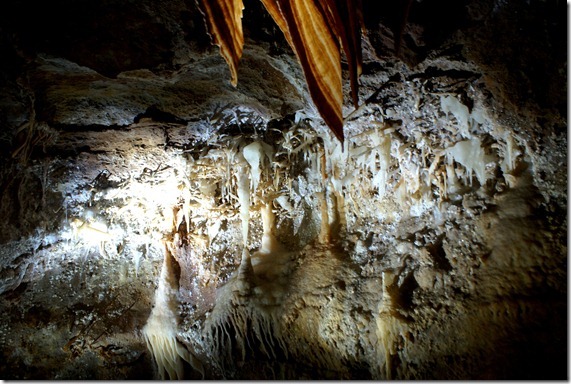
In the above photo you can see the little bitty stalactites (the ones going down because they need to hand on tight) almost touching the stalagmites (The ones growing up because they might get there eventually).
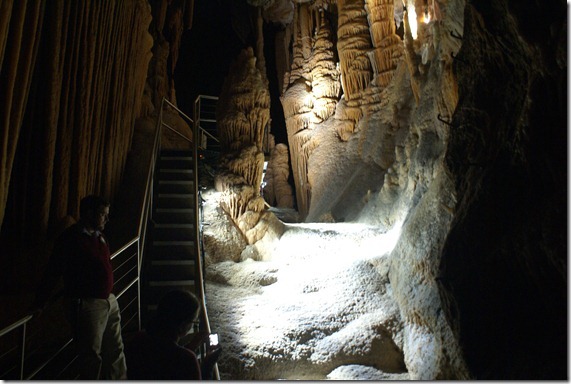
When they do touch and morph together they become known as columns. Which you can see in the background. The white glowing stuff in the foreground is flow stone that has stopped flowing and dried which makes it crystalize and go all sparkly a little like Edward only this stuff scares me more, I mean there is a real chance I could slip and twist my ankle. 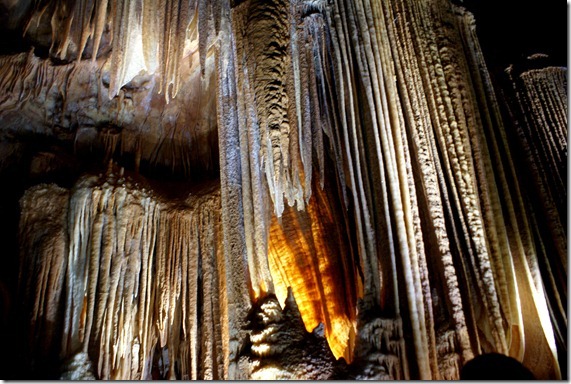
More dangly cave bits or shawls if you want to be technically correct.
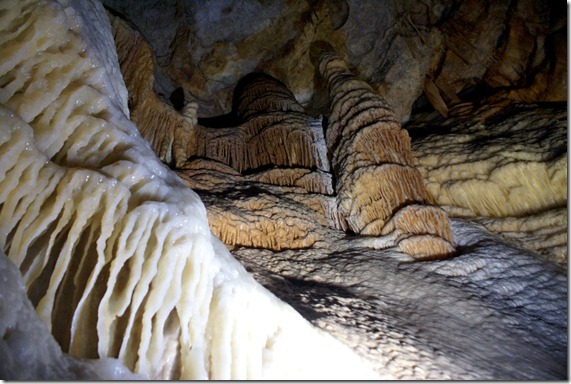
Columns and white slimy living flowstone, it’s ALIVE!!! Aaagh, grr Argh.
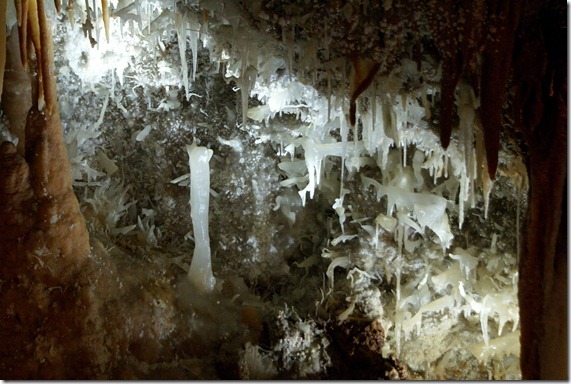
More twisty little freaks of nature, somewhere in there is one that has formed a perfect circle that the guides call the Fairy Toilet, see it’s not only me with the warped sense of humour.
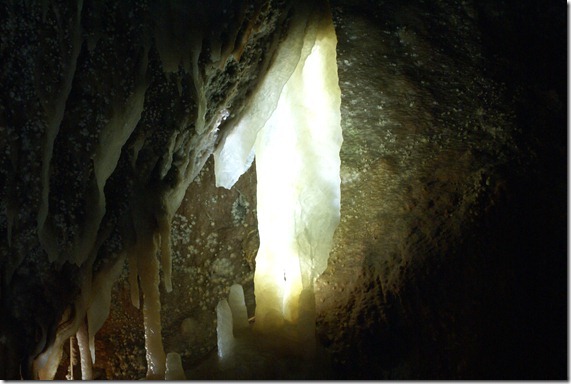
Look it’s Superman’s Fortress of Solitude, well it would be if Superman was the size of a leprechaun and didn’t mind troupes of tourists disturbing his ‘Me time’.
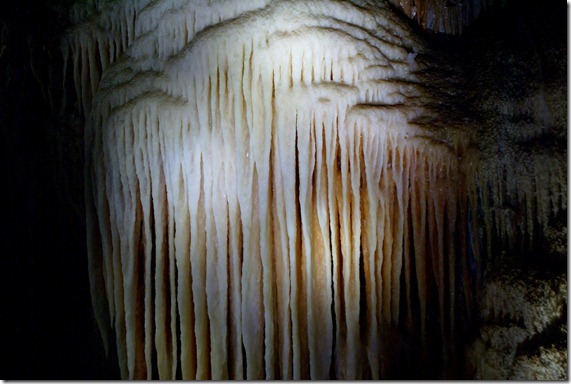
This shawl formation is the most famous one at Jenolan and is used in their logo. It is called the Indian Headdress and is supposed to remind you of the fancy ceremonial gear they put on Indian Elephants.
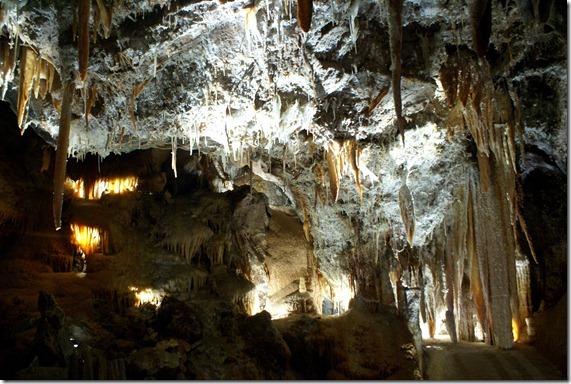
One last look, this is one of the larger caverns and photos don’t do it justice. If you ever have the chance go journey to the centre of the Earth (or at least j
ust under the top layer a little way) and have the breath sucked out of you by the glorious majesty of God creation.

I remember being wowed by some caves as a kiddo. So cool!